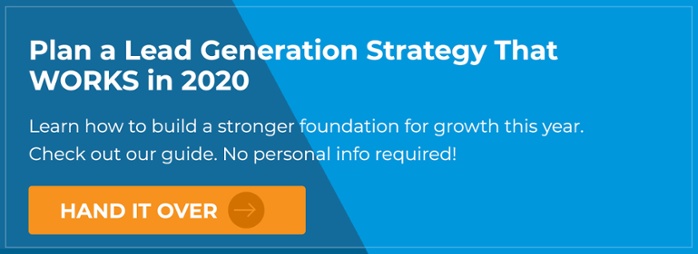
Do Healthcare Trade Shows Really Work?
Patrick Dodge
Founder
Trade shows are familiar territory for most healthcare companies.
In fact, these events are the only marketing investments some brands make with any consistency, and there are a bunch of them every year.
Month after month, supplement companies, lab testing service providers, clinical trial specialists, and medical device manufacturers line up on showroom floors across the country, ready to show how they can help you.
But does the ROI justify the cost? Let’s unpack that a bit.
What is Trade Show Marketing?
For those of you who are less familiar, trade show marketing is about promoting your company’s solutions at an industry exhibition where you can interact one-on-one with potential buyers.
This type of promotional event has evolved over the years. Brands are no longer confined to generic looking booths with a plain backdrop curtain and sell sheets spread out on a folding table. Today, healthcare companies are offering samples, product demos, and even virtual reality experiences right on the floor!
Advantages

Networking
The most alluring aspect of participating in trade shows is the opportunity for networking. The floor is wide open to connect with buyers one-on-one, answer their questions, and offer samples. Vendors can also scan badges worn by other attendees, capturing their contact information for follow up after the event. Companies that are really good at trade show marketing also collect data about which products and services people are most interested in, along with other valuable insights.
And the fun doesn’t end when the conference winds down for the day. Many events offer happy hour gatherings and other networking opportunities in the evening where professionals can rub elbows and exchange business cards.
You can also glom on to the event’s social media hashtags of course, and use them to drive extra exposure of your wares and invite curious buyers over to your booth. Bonus points for creativity here!
Educating Buyers
Most B2B brands now understand that no one wants to visit your booth for a sales pitch. People attend these events to learn and get inspired (and collect free swag), and it’s important you staff your booth with people who are friendly, outgoing, and eager to help any way they can.
Sometimes this means recommending a solution your company doesn’t offer if it means the prospect is a bad fit – and that’s a good thing. Why hand off a bad lead to your sales team instead of seizing an opportunity to build trust with another industry professional?
Keeping Up on Trends
These conferences are like one big family reunion to the marketers who attend them regularly. Trade shows are a great opportunity to reconnect with your professional network of clients and colleagues in the industry, catch up on new product and service offerings, and learn a thing or two in the workshops and keynote presentations throughout the event.
There is also an unspoken fear factor to all this. Some brands feel like they will lose visibility and relevance to their competitors if they stop attending. Will this happen? Doubtful, unless trade shows are the only marketing your company does.
Now, let’s talk about real challenges you will face with ROI.
Disadvantages
Limited Reach
Everyone attends these conferences to generate new business among a captive audience of qualified buyers, but how do the numbers stack up against other types of marketing?
Not very well.
The typical trade show crowd is usually in the ballpark of five hundred to a few thousand attendees. That’s a lot of effort to reach a pretty small audience. Even if you could make a close personal connection with every single attendee, it still wouldn’t compare to the volume of qualified website traffic you can get from a smart and sustained content strategy.
Expensive

The cost of trade shows is not insignificant, especially if you do several every year. It’s tough to pin down ballpark ranges since it depends on your floor space squar footage, how elaborate your setup is, and the varying costs of event fee and travel. E&E Exhibit Solutions offers some insight into how you can quantify fees.
Expenses include:
- Booth design and production
- Rental space for booths
- Show services
- Shipping and storage
- Booth installation
- Travel and meals for employees
- Accommodations
- Marketing collateral and giveaways
These items add up, and most of them will apply to every show you attend. Unfortunately, trade shows are not scalable. Until you can send a robot to do the heavy lifting, you will shell out a fair amount in operating costs.
Do New Relationships Last?
This last point may be the most critical one that never gets talked about. How likely is it that you can start a relationship with a new prospect that will last in the weeks or months after the event.
Trade shows can also be a bewildering experience for attendees. For many people, it’s complete sensory overload.
People are hurrying from one workshop to the next, sitting in on keynote speeches, drinking cocktails at networking mixers, and… talking to vendors in the showroom. By the time you leave you feel like spent firecracker.
I’ve been to many shows and had really engaging conversations with strangers. We exchanged business cards and made firm commitments to talk again soon. But when you step back into the office, everything changes. You spend days unburying your inbox and getting caught up on meetings you missed, and reconnecting with your new trade show buddies suddenly feels far less important. After a week or two, that conversation you shared that seemed so exciting is hard to remember.
It’s sad, but true.
This is part of the reason why your sales team complains about the leads you gathered at the show and handed off to them. They might say, “These leads are totally unresponsive,” and they’re probably right. If the prospect does remember your brand – it’s you they want to connect with. Not some salesperson they’ve never met.
The ROI with Trade Shows
Only your company can determine what the value of trade shows are. For all the benefits of meeting a captive group of industry professionals face to face, it all comes down to one thing – how much trackable revenue can you attribute to the show?
This is pretty challenging for most companies to figure out. And if the return on investment is less certain, would it make sense to attend fewer shows and invest some dollars in a solution that accomplishes the same goals – helping people learn with personalized content and earning their trust -- but reaches a greater audience efficiently?
I’m not saying trade shows are a waste of money. Our clients invest in them, and so do we. But they use them to supplement the marketing strategy, not drive it. With inbound marketing, every activity can be traced to ROI.
Best of all, we don’t hear complaints about the prospects from Sales nearly as often.
Sep 21, 2019 6:55:56 PM

